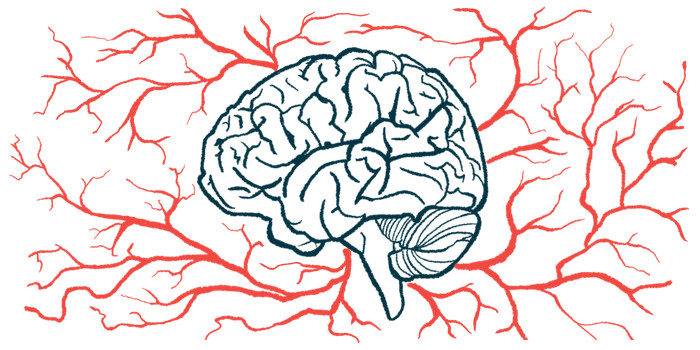Brain drainage issues may be unique when occurring in EDS patients
Co-existing conditions bring potential complications, worse symptoms, allergies

A condition called cerebral venous outflow disorder, where blood flow out of the brain is impaired, may have a unique clinical presentation when it occurs in people with connective tissue disorders such as Ehlers-Danlos syndrome (EDS), according to recent research.
People with connective tissue diseases who were seen at a clinic in the U.S. for suspected CVD exhibited different patient demographics, more severe symptoms, and worse life quality compared with the normal profile of CVD patients. Allergies to medications and surgical supplies were also prevalent.
“It is imperative that physicians recognize this distinct phenotype [clinical presentation] and are knowledgeable about the intricacies and potential complications associated with treating these conditions,” researchers wrote. “This effort will promote the development of new interventions and enhance the integrity of the current diagnostic processes with the goal of improving the well-being and quality of life of these individuals.”
The study, “Characterizing a new clinical phenotype: the co-existence of cerebral venous outflow and connective tissue disorders,” was published in Frontiers in Neurology.
EDS refers to a group of connective tissue diseases characterized by overly mobile joints, and soft, stretchy skin that’s easily damaged. Still, the manifestations vary substantially by disease type and can cause symptoms affecting the internal organs, muscles, and blood vessels.
IIH occurs when pressure of fluid surrounding brain is too high
Idiopathic intracranial hypertension (IIH) occurs when the pressure of the cerebrospinal fluid that normally surrounds the brain is too high. Symptoms include severe headaches, dizziness, and brain fog.
CVD is a highly related condition where blood does not drain out of the brain properly, impairing circulation and increasing pressure in the brain’s blood vessels.
CVD/IIH are not considered classic features of EDS. However, the researchers identified a trend at their clinic where symptoms of CVD were observed in people with diagnosed or suspected connective tissues diseases such as EDS.
Given that this subset of patients had been previously unrecognized and uncharacterized, the researchers conducted a review of their clinical data to better understand the disease presentation.
They identified 86 people (87.2% female), with a mean age of 36.6, and who had been referred to their center for suspected IIH or other CVDs, with highly suspected connective tissue disease. More than half (55.8%) had been previously diagnosed with EDS.
The researchers noted that, overall, these patients demonstrated “notable distinctions from the standard patient profile associated with classic IIH.”
Normally, the condition is seen in obese women of childbearing age from diverse racial backgrounds, while those in this study had a lower body mass index (a measure of body fat) and were mostly Caucasian.
The most common symptoms included headache, dizziness, brain fog, and ringing in the ears. The overall symptom profile differed from classic IIH, with patients tending to experience more severe symptoms even when the pressure in their brain was lower.
Headache severity and quality of life were also worse in these patients than in previous analyses of IIH patients or the general population, according to the scientists.
A range of other conditions were also observed aside from CVD/IHH, some of which have previously been linked to EDS. This includes postural orthostatic tachycardia syndrome (POTS), where one’s heart rate changes when standing up; dysautonomia, where involuntary bodily processes are disrupted; and joint hypermobility, among others.
Most patients (87.2%) reported allergies to at least one medication, and some (19.8%) were allergic to adhesive tape commonly used in the clinic. Hypersensitivity reactions such as these have been associated with EDS.
Allergies limit treatment options for patients
“These manifestations considerably narrow the selection of safe and effective treatment modalities for these patients,” the researchers wrote. “Without prior screenings and precautions, routine procedures could turn into high-risk situations, driven by undetected allergies to medications, sutures, or even adhesive tape.”
Altogether, the findings highlight the “vast complexity” of connective tissue diseases like EDS, and “necessitate a more nuanced understanding of CVD and accompanying connective tissue conditions,” the researchers wrote.
Given the newness of the association between these two diseases, the scientists believe misdiagnosis will continue to be a challenge, noting it is “paramount” for patients who have this clinical profile to seek out expert physicians.








